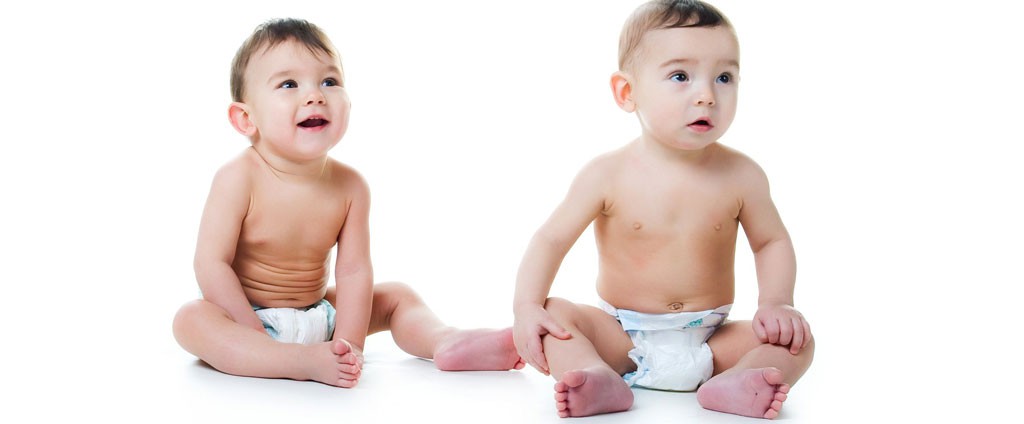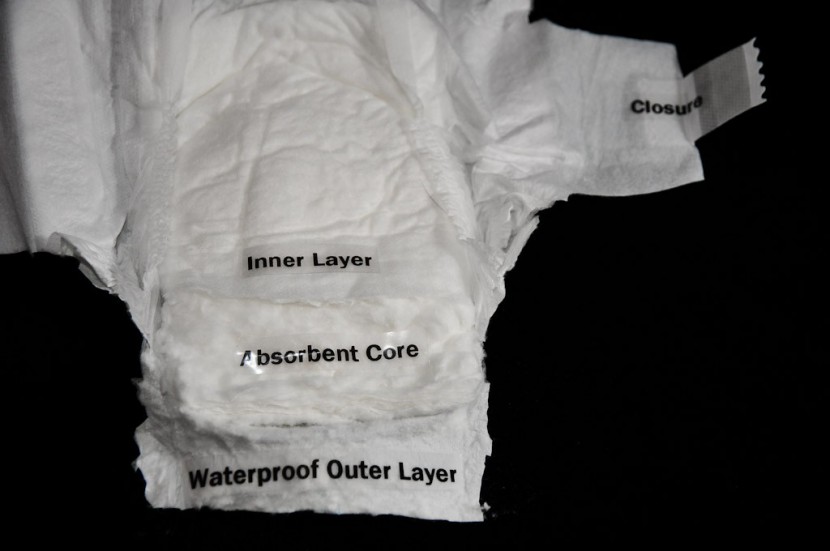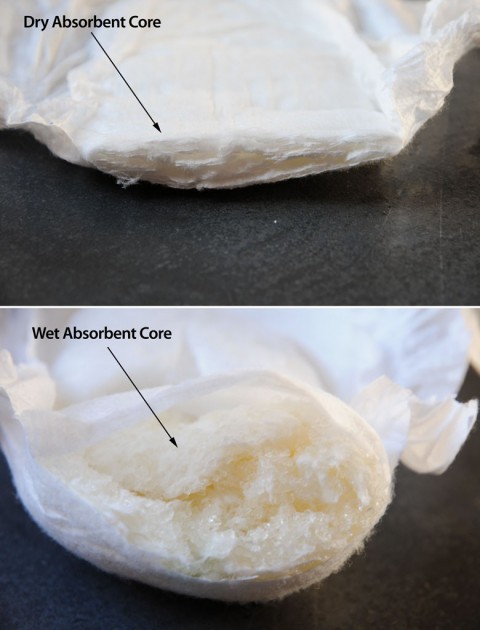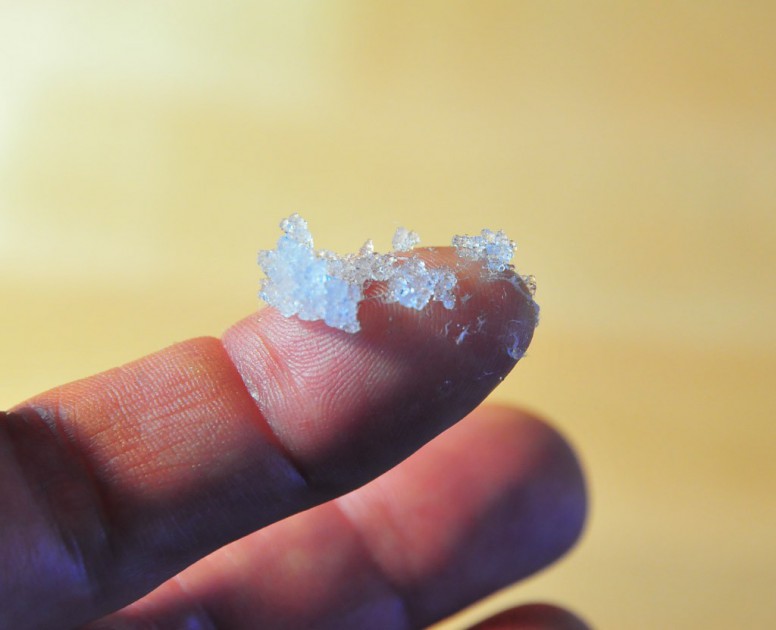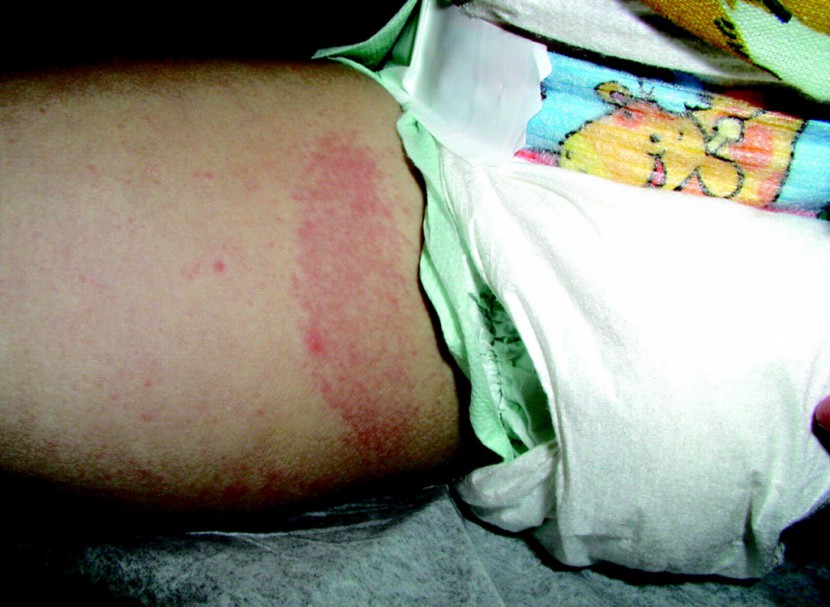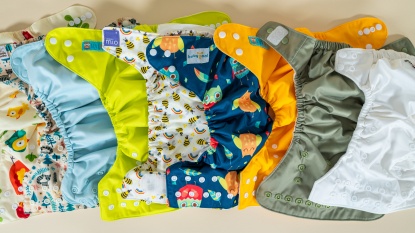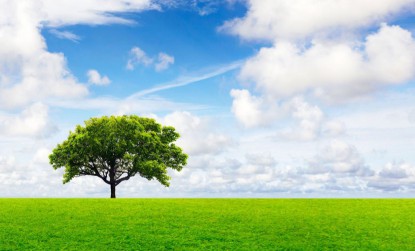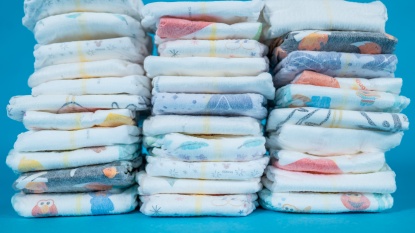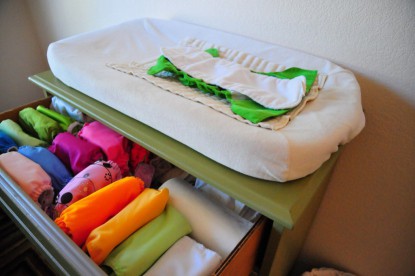This article is part of our review of The Best Disposable Diapers
You might think that the first disposable diaper was invented to increase mobility among families or for convenience, but that wasn't the case. Disposable diapers were developed by Marion Donovan after World War II due to a cotton shortage. It wasn't long, however, before mothers realized the practical everyday benefits of Donovan's 1950 diaper design: a rectangular plastic covering (initially made from shower curtains) over layers of tissue paper.
Since then, disposable diapers have gone through many changes; including more than 1,000 patents filed in their name. Disposable diapers increased in popularity following the introduction of SAP, Super Absorbent Polymer, in diapers in the mid-80s (more on this below). Today, an estimated 90% of US parents use disposable diapers, much to the chagrin of environmental activists who consider the landfill impact unethical.
Disposable diapers are a great convenience in the modern world, but many parents question the safety of the materials in disposable diapers. Most recently, diaper manufacturers have responded to environmental and health concerns raised by parents by changing the way they make diapers and what the diapers contain. There is a trend toward greener and more biodegradable disposable diapers, which we view as a step in the right direction. However, we're not out of the woods yet and depending on which brand of diaper you choose, the risks and impact can vary. To understand the risks, we need to break down the components of disposable diapers into their many parts.
Know the Basics
We urge parents to consider the materials used in each component of a diaper and to demand transparent disclosure by diaper manufacturers. (something not often provided or hidden on their company website in obscure locations). A summary of the essential diaper components is below.
- Inner Layer or Top Sheet - this layer sits next to your baby's skin and is, therefore, the front line on any toxicity or materials risk issue. This material is key. We believe you should require your diaper provider to disclose what their inner layer is (we found that many of them don't).
- Absorbent Core - this layer absorbs fluids, but when your baby repositions, fluid can be squeezed out of the core and back onto baby's skin. This liquid can be potentially contaminated by the core materials and is no longer just baby waste. To enhance absorbency, all of the diapers we tested includes a matrix of fluff material and chemical crystals, known as Super Absorbent Polymer (SAP), to soak up and trap fluid (more on this below). The role of the fluff, usually made from wood pulp and may also include wheat/corn-based materials, is to distribute the fluid across the diaper surface, while the SAP is intended to absorb and lock liquids in the core and away from the baby. The bulk of the diaper is composed of the core materials. We consider this the 2nd most important element to understand.
- Waterproof Outer Shell - all disposable diapers include a waterproof material for the diaper's outer shell. This layer is most often a petroleum-based plastic or plastic-treated material. Some green diaper companies use a plant-based plastic (aka bioplastic) to provide the waterproof coating, which you may see referred to as PLA or polylactic acid in their ingredients.
If you'd like more in-depth information, you can learn more on Made How.
Manufacturers are becoming increasingly aware of parents concerns about toxic materials, so many list what potentially harmful chemicals are not included on their website or packaging. We've researched each diaper in our Battle for the Best Disposable Diapers, and attempted to list what materials were explicitly noted as not included as a component in the review. Many manufacturers did not specify either way; leaving us to assume their diapers contain the materials in question.
Arrgh! The Mystery Ingredient May Be Toxic
Vexing to us is the lack of disclosure by many manufacturers about what, exactly, is in the diaper that they expect parents to place on baby's skin 24 x 7 for the next 3-5 years. We urge you to buy from manufacturers who offer complete transparency in their diaper ingredients. It is safer to buy from manufacturers who are not afraid to disclose their ingredients. The biggest brands, Huggies and Pampers, are often considered the most guilty on this score, but they are far from the only manufacturers who limit their disclosure of materials.
Some of this lack of disclosure is allowable by our government, such as Fragrance ingredients, which can be considered a proprietary trade secret and exempt from detailed disclosure. As reported in the Huffington Post and elsewhere, “…due to the 'trade secret' status of fragrances, manufacturers are still not required by the FDA to disclose their ingredients on the label or in any other way.” As a result, a manufacturer may bury dozens of potentially toxic chemicals under a “Fragrance” ingredient listing. For this reason, and others (see below on Perfumes), we urge parents to buy Fragrance-free diapers only.
The fact is there are potentially harmful chemicals that are known to be present in some disposable diapers, including chlorine, dyes, fragrances, phthalates, and more. We advise relying on the Skeptic's Rule of Thumb when it comes to potentially harmful ingredients:Super Absorbent Polymer (SAP)
The secret sauce inside disposable diapers since the mid-80s has been SAP. These tiny crystals are sprinkled inside the layers of the absorbent core of a diaper to absorb and trap fluid (i.e., from urine and wet poopy). These crystals go by several names including hydrogel, sodium polyacrylate, polyacrylate absorbents, or in Pamper's FAQ as Absorbent Gel Material (AGM) and can absorb a significant amount of liquid given their smaller size. It's not just major brands like Pampers and Huggies using SAP; it is in ALL of the diapers we tested. And we mean all.
Concerns about SAP come from multiple perspectives. Some of these are listed below:
- SAP is a relatively new material, having been invented in Japan in the early 70s and only used in diapers since the mid-80s.
- It is unclear if sufficient testing has been done to ensure that SAP is non-toxic and safe.
- Most modern-day SAP is derived from petroleum and, therefore, may contain chemical components of concern.
- In the past, SAP was linked with Toxic Shock Syndrome (Though it does appear that SAP itself was not a direct cause; more on this below).
In our research, we were not able to find credible, evidence-based studies which prove that SAP is either toxic or dangerous to humans. To the contrary, we have found some presumably tree-hugging green diaper companies who have concluded that the SAP they use is safe and non-toxic including but not limited to:
- BAMBO
- The Honest Company
- Seventh Generation
On the whole, we're left to conclude, somewhat anxiously, that the body of evidence (or lack thereof) suggests that SAP appears to be safe. Perhaps as a testament to the apparent safety of SAP, our founder, Dr. Juliet Spurrier, used BAMBO Nature diapers, a green diaper with SAP, for overnight diapers with her children. Though Dr. Spurrier notes, emphatically, that if she knew then what she knows now about disposable diapers, she would have chosen cloth diapering for daytime use, and used a green disposable for overnight.
This short video will give you a feeling for SAP's unique water absorption capabilities:Link to Toxic Shock Syndrome
SAP has been linked to Toxic Shock Syndrome (TSS). However, most experts feel the SAP itself was not the cause. They believe the prolonged internal use of SAP tampons provided a breeding ground for bacteria which resulted in TSS. In 1978, Proctor & Gamble introduced the ill-fated Rely tampon. The use of SAP allowed the Rely tampon to absorb an entire menstrual flow, encouraging women to use the product for a prolonged period without replacement. By 1980, the popular Rely tampon was linked to an uptick in Toxic Shock Syndrome incidents and was recalled. As a result, the use of SAP in tampons was discontinued.
Biodegradable SAP
SAP is a plastic and to our knowledge, all of the SAP in diapers today is derived from petroleum. Several companies have stated an intention to manufacture plant-based biodegradable SAP. Similar to the processes used for creating biodegradable trash bags, a combination of cellulose from wood or wheat, and starch from corn, potato, yams or other starch-rich plants, can be used to make a plant-based SAP which has similar absorbency to its petroleum-based cousin, but with improved biodegradability. To our knowledge, plant-based SAP is not currently being used by any diaper manufacturer that we are aware of, but we are optimistic that it will be in the near future. Because these materials are relatively new, they have not undergone any significant testing. However, the use of natural and sustainable materials and increased biodegradability are a virtuous combination.
Chlorine-free and Why it Matters
In disposable diapers, chlorine is used as a bleach to whiten diaper material. The problem with chlorine is that it emits small traces of known toxic chemicals called dioxins during the bleaching process. The desire to keep baby from being exposed to dioxins is the primary motivation for using chlorine-free diapers. This type of chlorine is not the same chlorine you find in your laundry room, but a gas form of the chemical with a different chemical makeup.
Dioxins
Based on animal studies, dioxins have the potential to “cause reproductive and developmental problems, damage the immune system, interfere with hormones and also cause cancer.” The Environmental Protection Agency has identified dioxins as a “likely human carcinogen.”
While dioxins are only found in trace quantities in chlorine-bleached diapers, we prefer “none” to “trace” when it comes to babies, particularly newborns because their skin is so thin. That's why we advocate going with a chlorine-free diaper. Also, upon further investigation, we aren't sure that this conviction is as useful as we once thought as dioxins are present everywhere. And while the goal would be to eliminate or limit your baby's exposure to dioxins, studies indicate it is hard to get away from dioxins with the largest culprit being the food we eat.
In fact, while trace amounts of dioxins are found in disposable diapers, the study we read indicated dioxins were also present on cloth diapers making it virtually impossible to find or choose a dioxin-free diaper option.
This information makes it more difficult than we originally thought to find a truly dioxin free option no matter what the production method is. However, before you assume it doesn't matter, the bleaching process of diapers does create dioxins that end up in the environment and eventually find their way into our food supply chain. These dioxins accumulate in our bodies and can be passed to a baby through breastmilk. So, while it may be less important what is in the diaper, it still matters what ends up in the environment. So going chlorine free means you are doing good things for the environment, and in the long run, this translates to good things for all the babies.
Happily, going chlorine-free does not need to pinch your pocketbook. Many of the diapers we tested are produced using Elemental Chlorine-Free (ECF) or Total Chlorine-Free (TCF) production methods, and several are budget-friendly: Cuties at $0.23/diaper is elemental chlorine-free and perfume-free, LUVS $0.14/diaper is elemental chlorine-free but has a clear perfumed scent. The Top Pick Seventh Generation at $0.30/diaper is totally chlorine and perfume-free in addition to current Editors' Choice Babyganics at $0.32/diaper and Eco by Naty at $0.37/diaper.
Perfume-free Preferred
Perfume fragrances are sometimes used in disposable diapers, presumably to mask poop's distinctive stench. However, an infant's rapidly evolving organ systems are both immature and exquisitely sensitive to chemical insults. The scents found in many diapers are strong and chemical-laden, harboring unnecessary irritants with the potential to cause health issues like diaper rash and respiratory symptoms. Equally concerning, manufacturers are not required to disclose the chemicals used in fragrances as the FDA allows them to consider their fragrances “trade secrets.” The Campaign for Safe Cosmetics notes that "in a 2010 study of fragranced products by the Environmental Impact Assessment Review of fragranced products titled Fragranced consumer products: Chemicals emitted, ingredients unlisted, it was found that "each product emitted volatile organic compounds that have been identified as toxic or hazardous under federal law", yet, "fragrance remains unregulated."
Our recommendation is simple: choose a perfume-free diaper. You don't need it, so it's not worth the risk. And, like avoiding chlorine in diapers, avoiding perfume in diapers is easy and painless. A lot of great diapers are perfume-free, and let's be honest, the fragrance doesn't mask or improve the smell of a dirty diaper. If a diaper is stinky, you should change it, not mask it.
Be Careful with Dyes
Dyes in diapers can be found in the colored patterns on the outside of the diaper, in the leg cuff and back elastic, and in the wetness indicator. These dyes can cause skin rash, as they may cause allergic reactions in some babies where the dye touches baby's skin. In a study published in Pediatrics in 2005, switching to dye-free diapers were shown to eliminate skin rashes which occurred in areas exposed to colored portions of diapers.
The photo shown below is an example of dermatitis caused by the dyes contained in the leg cuff of a diaper. Notice the green cuff of the diaper; this green color is created using dyes.Other diaper companies, like BAMBO and Honest Diapers, use dye pigments that do not contain heavy metals, which they believe are safe and hypoallergenic. To make things even more confusing or difficult to understand or compare from one diaper to another is the terminology that each manufacturer uses. We would like to include information on dyes in our review for choosing diapers, however, we are finding it very difficult to do so. With words like dye, disperse dye, pigments, colorants, and inks floating around (depending on which diaper you are reviewing) it became difficult to understand. When we tried to delve deeper to sort it out, we found even more confusing information.
There seems to be no clear or consistent use of any of the words. What one manufacturer calls a pigment, might be called a colorant by another. With no agreed-upon definitions or governing body to regulate the use of the words, it is hard to say what is in each diaper. What we found were some diapers that said dye-free had obvious prints. When we looked at their websites for more information, we found the words pigments, inks, and colorants to describe the prints.
Our take on it: we like dye-free and recommend it. Features like wetness indicators though helpful are unnecessary and we prefer to keep it simple. We suggest you look for diapers that have no apparent colors near baby's skin. So while a pattern on the back cover may not cause a problem, colored leg cuffs might. If your baby has a reaction to a particular diaper, which claims to be dye free, we suggest you try a different brand just in case the original diaper did use an additive but calls it pigments.
Fear of Phthalates
If you already read our article, Are Plastics Safe for Baby Bottles, you may know that phthalates are a plastic ingredient of concern. And, they may also be in your baby's diaper. Phthalates are mainly plasticizers, or “substances added to plastics to increase their flexibility, transparency, durability, and longevity.” They are commonly used to soften plastic, for example in making a soft vinyl, and are also commonly added to lotions and shampoos. In some disposable diapers, phthalates may be used as part of the process to create a waterproof outer liner. Phthalates are not tightly chemically bonded to the plastic, and as noted in the Pediatrics paper cited below, “are therefore continuously released into the air or through leaching into liquids.”
Phthalates are on the radar of the medical community — and we think they should be on yours too — due to potential toxic effects to the developing endocrine and reproductive systems, which infants are particularly vulnerable. Phthalate sources are not limited to some diaper liners, but are in a broad range of “plastic products such as children's toys, lubricants, infant care products, chemical stabilizers in cosmetics, personal care products, and polyvinyl chloride tubing.” The American Academy of Pediatrics journal, Pediatrics, published a paper titled, Baby Care Products: Possible Sources of Phthalate Exposure in July 2008. In this paper, they noted, “Children are uniquely vulnerable to phthalate exposures given their hand-to-mouth behaviors, floor play, and developing nervous and reproductive systems.”
Not all diapers use Phthalates. But, figuring out which ones do is a challenge, since US law does not require disclosure of Phthalates.
Again, we advocate using the Skeptic's Rule of Thumb when it comes to potentially toxic ingredients: “if they don't say it's not in there, then assume it's in there.” Here are a few manufacturers who have gone on record stating there are no phthalates in their diapers:
- BAMBO Nature
- Honest Diapers
Environmental Impacts
The Sierra Club has a balanced view on disposable diapers, and they encourage the use of biodegradable diapers if you use disposables.
What does Biodegradable mean?
For a product to be considered biodegradable it has to meet specific qualifications. Those qualifications are part of the Federal Trade Commission's (FTC) Green Guides. The Green Guides state that, “the entire item will completely break down and return to nature (i.e., decompose into elements found in nature) within a reasonably short period of time after customary disposal.” It further goes on to define a reasonable amount of time as one year unless otherwise specified.
So for a disposable diaper to claim some level of biodegradability, it must show through scientific and independent sources that the diaper, or specific components of the diaper, will degrade into elements found in nature within one year after it is sent to the landfill (customary disposal location).
Do Diapers Breakdown in Landfills?
To answer this question, we need to look at how landfills work. In general, landfills are designed to isolate trash from the surrounding environment. This isolation is done to help protect the environment from the toxic items usually found in a landfill. To accomplish the sequestration, landfills typically employ a plastic or clay liner as a containment system. The goal is to prevent trash from coming into contact with air and water. As waste is added to the landfill, dirt is placed in layers on top of it to ensure it stays dry and has limited contact with air. So by design, a landfill contains very little air or moisture, two components necessary for biodegradation to occur.
When you throw away your disposable diaper, it more than likely ends up in a landfill, or as the FTC calls it “a customary disposal site.” Once there, it is placed in an environment specifically designed to prevent contact with air and moisture. Without air and moisture, it can't biodegrade. This environment may explain the estimate of 500+ yearsfor a disposable diaper to decompose. Therefore, we feel it is safe to assume that no matter how green a disposable diaper is, or if it contains “biodegradable materials,” that it is unlikely it will break down in a way that meets the FTC Green Guide stipulations of 1 year.
Are Biodegradable Claims Deceptive?
A recent FTC order did confirm that some marketing of green biodegradable diapers was misleading and deceptive. While the order was specifically about gDiapers, it wouldn't surprise us if the FTC decision eventually applies to all biodegradable claims for disposable diapers.
If the Green Guides that require a diaper to decompose into natural elements within a year of customary disposal are followed, then we feel that all claims of biodegradability concerning disposable diapers, or their components, is deceptive marketing. It is unclear to us that any of the diapers that claim biodegradability are actually in compliance with the FTC's legal definition of breaking down in one year. However, we would assume that in practice the inclusion of more biodegradable materials would result in some portions of the diaper possibly breaking down faster than less biodegradable options; but “faster” is relative and might only mean tens of years instead of hundreds.
So do the claims matter?
We think the use of biodegradable materials or the claims of biodegradability of a disposable diaper is relevant. While biodegradability marketing may be deceptive (misleading consumers to believe the product will degrade quickly in a landfill when in practice it doesn't), we feel the overall result is still a step in the right direction and indicates a company that is trying to create a better product for the environment. Without verifiable, scientific evidence, it is hard to unequivocally determine the benefits of such biodegradable materials in regards to environmental impacts. But we can't help but feel it is a step in the right direction.
Toxic Products
Did you know that human feces (aka. poop) is toxic to the environment? Did you know it is illegal to dispose of poop in the landfill? Even if you fold it in a disposable diaper? Did you know that poop disposed of in a landfill could seep into the water table and contaminate our drinking water?
Some parents cite that a deterrence of using cloth diapers is the cleaning or rinsing of poop out of the diaper before washing. Given that any feces is toxic, and should not go into a landfill, then the same rinsing should happen with disposable diapers. This knowledge somewhat levels the playing field between cloth and disposable diapers and their perceived convenience.
The Better but Still not Great Disposables
With the above information in mind, here are some of our favorite green diapers and what they have to say about their biodegradability, or partial biodegradability. Remember that once they go in a landfill, their ability to degrade is severely impacted. In other words, while it may not take the postulated 500 years to degrade, it could still take a considerable amount of time (longer than your baby's lifetime).
- BAMBO Nature claims 80% biodegradability and earned an overall score in the top 5 products.
- Eco by Naty offers a biodegradable back sheet film based on corn and biodegradable high loft for their core and came in 1st in our review.
In the end, a disposable diaper is still a disposable diaper. No matter how green it is, or what claims it makes concerning biodegradable materials, the environmental impact is always substantial. So if the effect of your baby's diaper-wearing years is a concern to you, we encourage you to consider one of the top performing cloth diapers.
Our Recommendations
Our advice is simple: play it safe with your baby.
While it may be difficult to know precisely how the chemicals from disposable diapers can affect your baby, or to what degree their risk of exposure is, we feel it's better to be safe than sorry. Based on the research compiled above, we recommend you choose a diaper with the following characteristics:
- Chlorine-free
- Fragrance-free
- Phthalate-free preferred
- Dye-free (or at least pigments without heavy metals)
- We like biodegradability for what it implies, but it is not our top concern
No diaper we tested was perfect, but the top three performing diapers in our tests are all good options from our point of view, and we'd recommend you give them a closer look:
- Eco by Naty
- Babyganics
- Seventh Generation
To learn more about BabyGearLab's in-depth review of 24 Disposable Diapers, which includes a list of the disclosed material contents of each diaper, go to:
https://www.babygearlab.com/topics/diapering-potty/best-disposable-diaper

